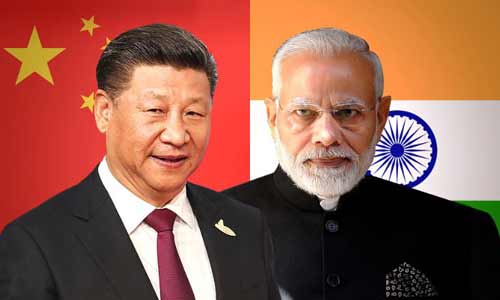
Geo-Political Crystal Ball Gazing: Future of China with Focus on India-China Relations
Wed, 04 Nov 2020 | Reading Time: 11 minutes

International Geo-Political Overview
A perceptible change in the geopolitical landscape and worsening of the international security situation was discernible even before President Trump took over as President of the USA. His ‘America First’, tilt towards bilateral transactional engagements, loss of credibility of ‘The West’ (USA, allies and developed liberal democratic world order), decades of waging unwanted wars and emergence of internal and external fault lines globally, have led to a turbulent multi-polar world where nations do not necessarily subscribe to the old world order, but follow alternate ideologies, illiberal autocracies/authoritarian rules like China, Russia, and their followers (North Korea, Iran, Pakistan, Venezuela). This has compelled nations to follow the path of ‘perpetual engagement and strategic balancing’ to create/retain/expand their strategic space. The breakaway nations led by Russia and China analysed the strengths and vulnerabilities of the West intending to counter them, achieving their national objectives by carrying out a form of hybrid competition and confrontation, but staying below the red lines of the West, so as not to invite military or punitive responses. The USA already acknowledges Russia and China as great powers (Russia more for its nuclear assets and military prowess), and now officially considers China as a peer competitor [Security Strategy (NSS) of 2017]. Incidentally this month the IMF has rated China as the largest economy in the World (this input surprisingly has gone largely unnoticed). COVID 19 and an increasingly aggressive China has stirred the pot further and has the potential to irrevocably change the global order permanently.
COVID 19: A Geo-Political Turning Point? The current post-COVID geopolitical security environment has galvanised the rising dragon China to shed Deng’s dictum of ‘hide your strength, bide your time’ with President Xi Jinping’s (CCP) showing urgency to precipitate events and achieve his ‘China Dream’. China has donned its most visible, aggressive, multi-domain intervention ‘avatar’ leaving most nations, leaders, world institutions, geo-political/strategic experts alarmed, apprehensive and puzzled; most so a nervous, vulnerable and suddenly underconfident perplexed USA. Ironically, the pandemic started in China (with numerous theories doing the rounds), but China seems to have rebounded the fastest. The 19 October 2020 Chinese economic forecast shows an overall balanced growth of 4.6 percent, a V-shaped recovery, which has been confirmed as huge and real by the Federal Reserve (US Central Bank) and IMF, while other nations are reeling in the midst of an unprecedented slowdown and negative growth pattern. The security situation in the Indo-Pacific region with a focus on the China Seas (East and South), Taiwan Straits and South Asia (LAC along the India-China border) has never been so volatile or dangerous with a high probability of turning into a shooting war. The lack of agreements/protocols (broken or non-existent) and most of all trust amongst the protagonists, especially the military mobilized and deployed in large numbers at eyeball to eyeball contact, employing multiple domains (land, maritime, air, space, information, PSYOPS, cyber ) for confrontation, has placed the geopolitical security environment at a razor’s edge.
The Vicissitudes/Challenges of Forecasting. Crystal ball gazing/forecasting has always been difficult and uncertain, particularly in geo-politics. An area in which the rules of the game are poorly understood, information is invariably incomplete, and expertise often confers surprisingly little advantage in predicting future events[i]. Policymakers tend to fill in with past experience which makes all of them forecasters. They often assume that tomorrow’s dangers will look like yesterday’s, retaining the same mental map even as the environment around them changes dramatically. On the other hand, if policymakers addressed all imaginable situations and threats, nations (India) would need so large and expensive a national security establishment that the country could do little else. While scenario builders visualise too many possible futures, by contrast, forecasters believe it is possible to calculate the odds of possible outcomes, thereby transforming amorphous uncertainty into quantifiable risk. In geo-politics, we need to combine both approaches, as having too many different versions of the future can make it nearly impossible to act. In geopolitics, the most vibrant character of decision-making is ‘Uncertainty’. To illustrate, in the current strategic security environment who can predict the following with certainty; Will there be bullets fired in East Ladakh/small scale clashes leading to kinetic action by 31 December?; will the tense standoff in the China Seas (South and East) and Taiwan Straits with no agreements/protocols between arrayed adversarial forces result in hostile actions accidentally/deliberately by end of 2020?; Will China start pulling back its forces mobilized in East Ladakh before severe winter? Philip E Tetlock, during his research on forecasting, found that seasoned political experts had trouble outperforming “random guesses” when it came to predicting global events[ii]. The experts fared even worse against amateur news junkies. Overconfidence was the norm, not the exception. Those who were surest that they understood the forces driving the political system fared significantly worse than their humbler colleagues, who did not shy from complexity, approaching problems with greater curiosity and open-mindedness.
Forecasting the Immediate, Present and Near Danger: LAC and Taiwan
Crystal Ball Gazing: LAC Manoeuvres during Winter of 2020/21. There is no doubting the asymmetry in (Comprehensive National Power) CNP between China and India, however, militarily along the LAC in East Ladakh, India can negotiate on equal terms, due to the pro-active operational manoeuvres undertaken by the Indian Army. China would aim at attaining an overwhelming geopolitical and strategic advantage vis-à-vis India, which cannot be altered by war. This has presently been foreclosed/stalled by Indian Armed Forces due to the extremely fast mobilization and mirror deployment in strength, building logistics sustenance capability for the winter, forward posturing of the IAF, mobilized Indian Navy signalling intent of intervention in the Indian Ocean Region (IOR) (further strengthened by QUAD), strong retaliation at Galwan (which shook up the PLA), and bold surprise occupation of the Kailash Range dominating heights compromising Chinese ground positions, as also clear intent and resolve that our Armed Forces will stand firm, stay the winter and rules of the game have changed irrevocably. Our Army has a formidable reputation of fighting in high altitude terrain, management of LoC/LAC of which we are masters. The likely scenario which is likely to pan out are bulleted below: –
- No major operational land manoeuvres by the Chinese expected. India too will bide its time. India has also signalled that rules of engagement along the LAC has changed and troops have been ordered to even use firearms if their positions are under threat.
- Total lack of trust especially between the Armed Forces prevails. Our Army will stay deployed in strength through the winter.
- China is equally wary of Indian probability of offensive manoeuvres (operational/ tactical). One of the senior PLA Generals has publicly warned China of the possibility.
- China could carry out demonstrative posturing and increased movement along the LAC even in other Sectors [Middle (HP & Uttaranchal) and Eastern (Arunachal Pradesh, Sikkim).
- India must be prepared for sudden opportunistic tactical moves by PLA. India too will be planning the same as quid pro quid operations, as also part of the consolidation of gains for leverage during negotiations.
- Possibility of Mutual Understanding on LAC Standoff. There is a distinct possibility of PLA agreeing to mutual pulling back of troops on terms acceptable to India. This is because China has lost the opportunity for ensuring strategic gains, and any further major offensive action could prove counter-productive and very costly with non-commensurate gains. Deploying in strength over a long period, along the LAC sends a wrong message to the World about an aspiring global power who has failed to resolve his boundary issue, which he set out to do. Geo-political prediction is uncertain as already elaborated, but China could seek a face-saving LAC resolution before severe winter sets in. Certain non-negotiables for India militarily are continuing building/upgrading infrastructure along LAC, use of DBO ALG and strategic Darbuk-Shyok-DBO road, patrolling up to designated points in Depsang plains, and occupation of Kailash heights. The tenuous and ambiguous concept of ‘Buffer Zones’ should be viewed with extreme caution due to the possibility of different interpretations. The very concept of border/LAC management needs to be redrawn with proper verification and validation processes factored in.
- Pakistan unlikely to get directly involved. Multi-Domain hybrid warfare continues, and mobilization can be expected closer to any major move by China.
- QUAD consolidation good signalling. Ex Malabar shows intent.
- An interesting summer of 2021 lies ahead based on events globally.
The nuclear dimension; China and India are two mature nuclear powers with a stated ‘no first use policy’, and this aspect is not being considered as of now.
- Increasingly it is clear that leaders very often take unilateral decisions despite contrary advice and hence behavioural science/study of leaders (Xi Jinping, PLA commanders, Gen Bajwa) vital.
- This is a golden opportunity to impress upon the Chinese the urgency and strategic necessity of ‘Delineation and Demarcation of LAC/IB’ to preclude the occurrence of more such standoffs, which could lead to a shooting war.
The Taiwan-LAC Connection. Often the obvious which stares one in the face is never so obvious till it becomes too late to react. The Chinese spurt in belligerence and actions (kinetic as elaborated, and in the cognitive domain like wolf diplomacy, trade sanctions, intervention in global institutions) have certainly puzzled the leaders and international community on the main Chinese objective. There is very little dialogue about it, except in generalities. We must be clear that they are working on an overall grand strategy. There is a central national objective, along with subsidiary aims which collectively will bring China closer to its China Dream of becoming a superpower. Even if China had the capability and capacity to act against Taiwan and India simultaneously, only one is likely to be its core objective, with the other acting as a decoy (payoffs in the subsidiary objective would be operational while the main would be strategic). China has the resources which are distinctly different to address both simultaneously as he is doing. While Taiwan needs amphibious, maritime and airpower, LAC predominantly requires mainly land (acclimatized for super-high altitude warfare) and air forces. The other multi-domain operations like cyber, network-centric, 3 Ws (media, legal, psychological), economic, diplomatic operations can be employed using central resources with decentralized command and control. All prudent nations and militaries will react assuming the worst-case scenario (within realms of practicability and probability and not hype) against them. Taiwan and India and their allies (in this case common; the West) must look for nuanced military and non-kinetic indicators to discern Chinese intent and stay ahead of the loop. So far both India and Taiwan have stood their ground (supported by the West), firmly and resolutely. China has had a setback at least along the LAC but has not reached the end game as yet. Again, it will do well to accept that having initiated pro-active actions on all fronts, China will not pull back quietly, but will deploy and employ all domains including subterfuge, surprise, deception, disruption and hybrid warfare to achieve its goals.
Positive Takeaways from Chinese Belligerence. There has been a forward movement in the higher security and defence management in India with numerous positive steps like ‘Aatmanirbharta’ in defence and critical sectors, defence sector reforms, the appointment of CDS, creation of Department of Military Affairs, focus on priority defence procurement, steps for the corporatisation of OFB (Ordnance Factory Board), enhance strategic and defence cooperation with the USA and other friendly nations. The Chinese LAC challenge has brought into sharp focus the necessity of ‘complete and comprehensive integration of our National Security Architecture’ which is outside the scope of this paper. It has eliminated the bogey of the Chinese Dragon as a behemoth and ten feet tall and all-powerful, and the bogey of the 1962 debacle once and for all, including the military. It has irrevocably pointed our focus on our most serious strategic challenge/threat of China and will ensure a more pragmatic and realistic assessment of Pakistan, who will become just an irritant as the Indian asymmetry widens. It has also acted as a clarion call to 1.4 billion Indians for the next 50 years (two generations), that China the permanent contiguous immediate hegemonistic neighbour will always have an adversarial/confrontationist relationship because that is how realpolitik pans out. This automatically tells India that we have no choice but to build our CNP especially the military domain (at least till our border issue is resolved which China will not do in immediate future being a good pressure point against us) to meet all the challenges of a multi-polar, multi-domain competitive, confrontationist world, to ensure that our National vision and aspirations are met.
China 2040/2050: Likely Scenarios, Pathways Adopted and Grand Strategy
Likely Scenarios. With uncertainty as a backdrop, we can forecast four fairly obvious scenarios of China two/three decades from now (also supported by RAND Report[iii]), which are: –
- China Dream Achieved (Triumphant). Dominates the world stage in most domains, with modern military and an innovative economy.
- Almost There (Ascendant). Pre-eminent power not only in Asia but in other regions, as well.
- Status Quo (Stagnant). Suffered from low growth and faces social unrest.
- Fading/Disturbed internally (Imploding). Experiences a crisis of existential proportions, in which domestic instability undercuts the country’s international influence.
Pathways Adopted by China based on Growth – Pathways likely to be adopted by China against its adversaries are likely to be a mix of multi-domain approaches (PDIME – political, diplomatic, informational, military, and mainly economic) with; firstly, adopt cooperation, accommodation and competition when growth is stagnant/slow; secondly, confrontationist/even threatening conflict approach if growth pattern remarkably surges like now post COVID, as confident and assertive China perceives that the world, especially the USA and the West is down; thirdly, almost impossible to predict if CCP (not China) perceives an existential crisis amidst widespread out of control internal dissension, forcing CCP to create a false external threat narrative and instigate nationalism and jingoism, provoking conflict to deflect people’s attention. India must carefully analyse signals emanating from China, as the perceived alignment of India with the USA and its allies will evoke a strong response as is happening now. India while structuring its strategic manoeuvres and attempting to retain ‘strategic autonomy’ should be aware that it is also a battle of perception whatever may be India’s intention.
Core Elements of Chinese Grand Strategy. The struggle between the US and China is ultimately over which country offers a better road to progress. China seeks to demonstrate that its brand of governance is superior to that of the West, and consequently, it deserves a greater say and political influence over international affairs. Post COVID instead of being muted and cooperative, China has pulled out all the stops and is showing urgency in achieving President Xi Jinping’s China Dream perceiving an opportunity. Watching the annoyance and hostility of nations, there is a visible hardening of stance and siege mentality amongst Chinese leaders, especially Xi. Having mounted the nationalist, high growth, high aspiration tiger, Xi may be tempted to act thinking that it’s a ”now or never’ period and even views it as an existential struggle for the CCP. China is fully aware that its rise is going to be contested every step of the way especially by the USA, using every attribute of their CNP. These moves, as can be seen, will sometimes be unreasonable, illegal, by subterfuge, breaking agreements (especially on trade and high end and disruptive technologies); forming strategic and military alliances; and engaging in political, military, trade and economic brinkmanship. Under these circumstances, the core elements of Xi/CCP to guide China are likely to be: –
- Ensure the legitimacy of CCP for the Long Term. While Xi remains the absolute leader, we must not forget that there are approximately 80 million CCP members, a degree of factionalism within, and groups and individuals with a different world and China views (including numbers who admire the USA) creating a paradox within. Since there are no elections, material prosperity and economic growth remain central to CCP survival.
- The New Mantra. When confronted externally by more belligerent adversaries China realizes that its policy should be ‘liberal externally and illiberal internally’.
- Win International Support and Recast Global Rules and Order. The emerging multipolar world is already seeing many nations who want to follow their ideology and paths, especially those ruled by autocrats/dictators who are happy to find alternate narratives and options led by Russia and China with structures/alliances/even economic backing to follow their path. The biggest requirement for all these countries even the developed nations is economic help. China with its deep pockets, BRI and economic statecraft is fast emerging as a very strong alternative to global leadership. With increasing geo-politico-military-economic-cultural clout and presence in the world institutions, China no longer wants to bide its time, as it feels it has arrived.
- Increased Isolation of Taiwan. It is extremely difficult to forecast the status of Taiwan in the next two/three decades. For the CCP the ‘one-China policy’ is a core non-negotiable national imperative.
Neutralise/Remove US and Western influence in Asia and Indo-Pacific. China undoubtedly stands amongst the first two in most parameters of the economy, diplomatic influence, military capability, future resources, cultural influence and soft power (fewer defence alliances and technology where it is fast catching up), and has almost caught up with USA in overall CNP[iv]. Xi has transformed the PLA into a modern, cohesive force capable of fighting a multi-domain war outside its sovereign territory. Compact integrated theatre commands, rapidly expanding Navy with blue water capabilities, strategic support and rocket force incorporating the latest in game-changing niche (AI, hypervelocity, nanotechnology, robotics, space and satellite systems) and disruptive technologies make it a formidable vertical of its CNP. IMF has already stated that it boasts of the largest economy in the world. Numerous wargames conducted by US military and strategic Think Tanks has signalled to the USA that in case of a war with China an assured victory is not guaranteed. China feels it is her right to dominate Asia being a global power, for which it has to erode the West’s influence completely.
Conclusion
This is undoubtedly a momentous, historic moment for the geopolitical future of India. We have so far got our act together. We need to stay strong and firm, avoid jingoism, support and have faith in the professionalism of our battle-hardened Armed Forces, remain ahead of the Chinese loop, anticipate her moves and preempt them. It’s a long road ahead with numerous multi-domain challenges as no doubt China with her client state Pakistan will step up their hybrid operations in the months ahead, to achieve their objective, which they have failed to do by military intimidation and subterfuge. If we come out of the LAC standoff with our national interests not compromised, our territorial integrity and sovereignty intact, ensure a stalemate which will be seen as a victory, and our national resolve and confidence at a much better place than before, it will open the skies for global support and cooperation. An enhanced status amongst the comity of nations will act as an impetus for sustained growth and emergence as a ‘balancing power’.
References:
[i] ‘A Better Crystal Ball: The Right Way to Think About the Future’ by J Peter Scoblic and Philip E Tetlock, Foreign Affairs, Nov/Dec 2020.
[ii] Superforecasting: The Art and Science of Prediction’ by Philip E Tetlock, published in 2015 by Crown Publishers, available in Amazon
[iii] ‘China’s Grand Strategy: Trends, Trajectories, and Long-Term Competition’, 2020 RAND Corporation Report commissioned by US Army, Link – https://www.rand.org/pubs/research_reports/RR2798.html
[iv] Lowy Institute Asian Power Index 2020, Link – https://power.lowyinstitute.org
Disclaimer
The opinions expressed in this article are the author’s own and do not reflect the views of Chanakya Forum. All information provided in this article including timeliness, completeness, accuracy, suitability or validity of information referenced therein, is the sole responsibility of the author. www.chanakyaforum.com does not assume any responsibility for the same.
Chanakya Forum is now on . Click here to join our channel (@ChanakyaForum) and stay updated with the latest headlines and articles.
Important
We work round the clock to bring you the finest articles and updates from around the world. There is a team that works tirelessly to ensure that you have a seamless reading experience. But all this costs money. Please support us so that we keep doing what we do best. Happy Reading
Support Us




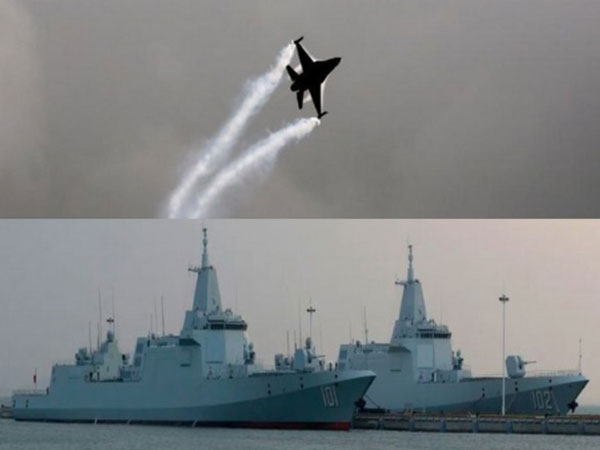

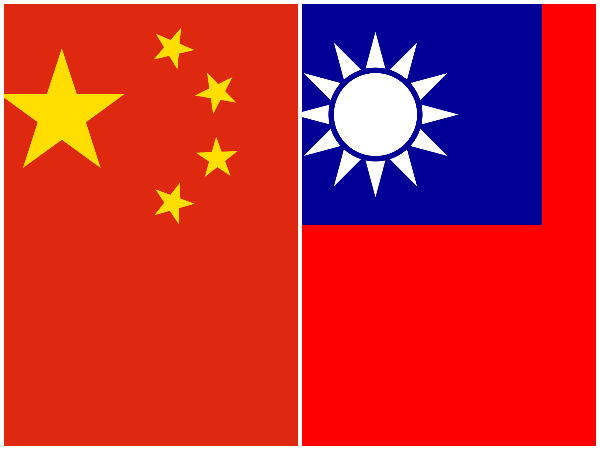
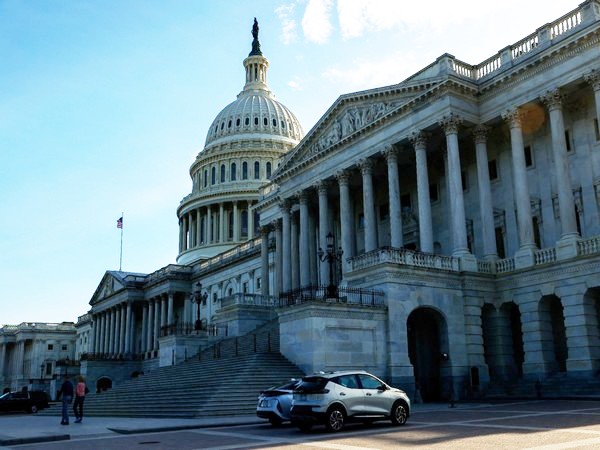

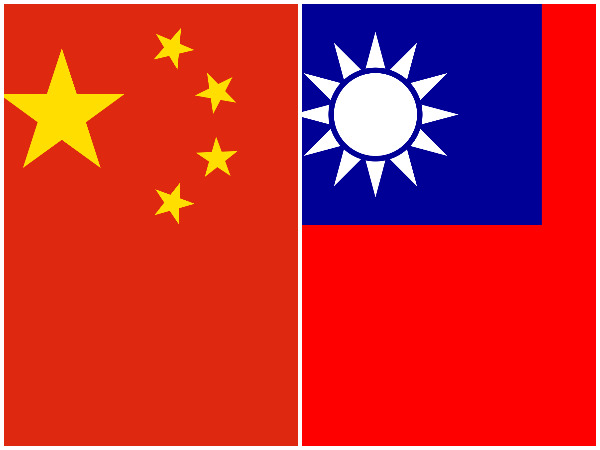


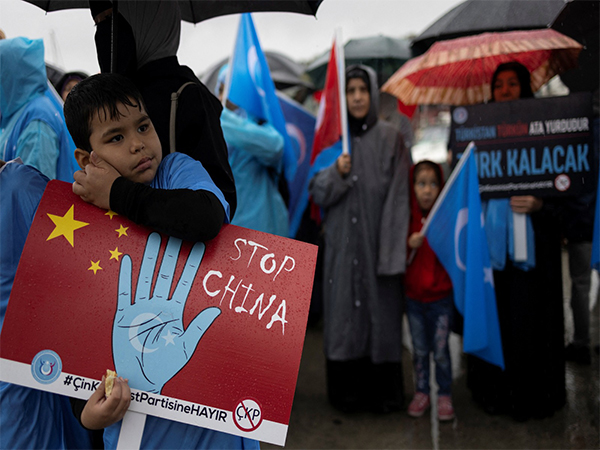
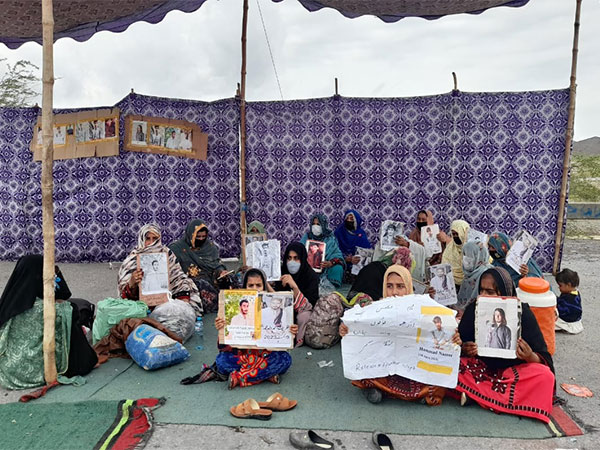






POST COMMENTS (1)